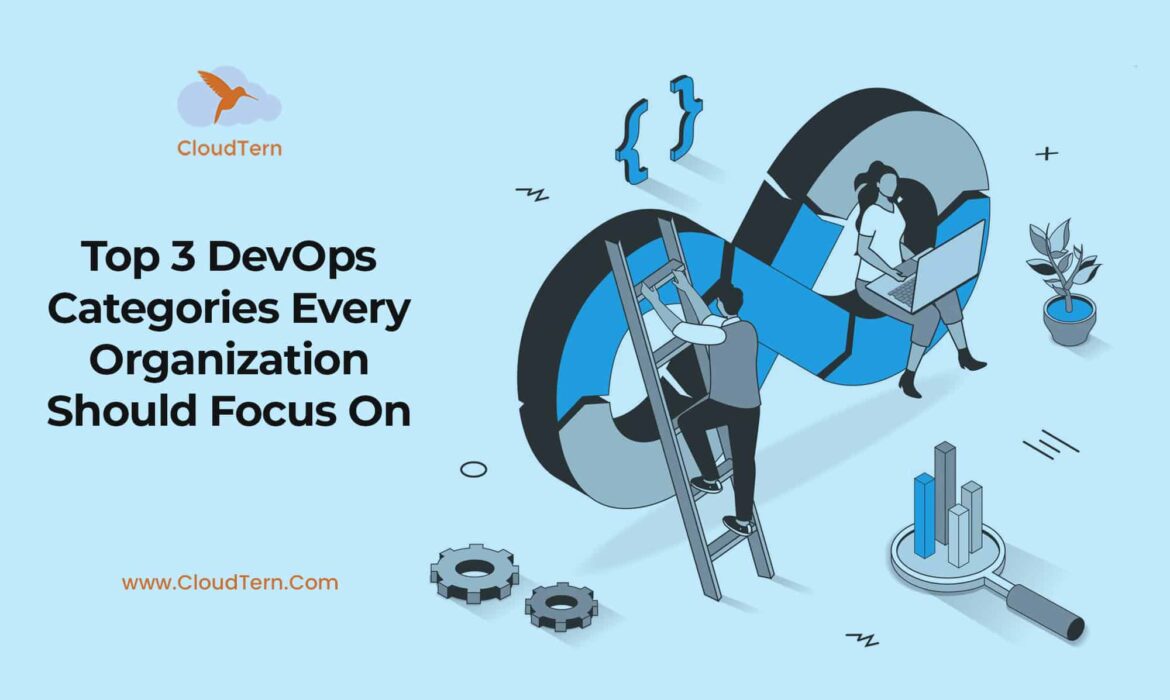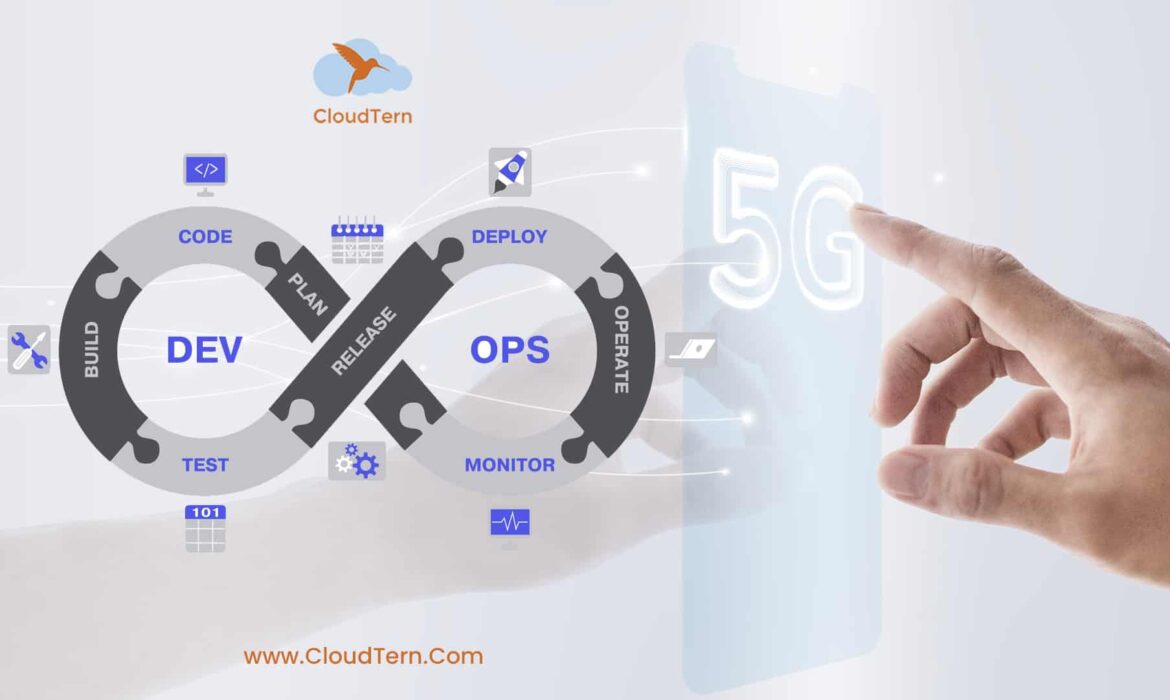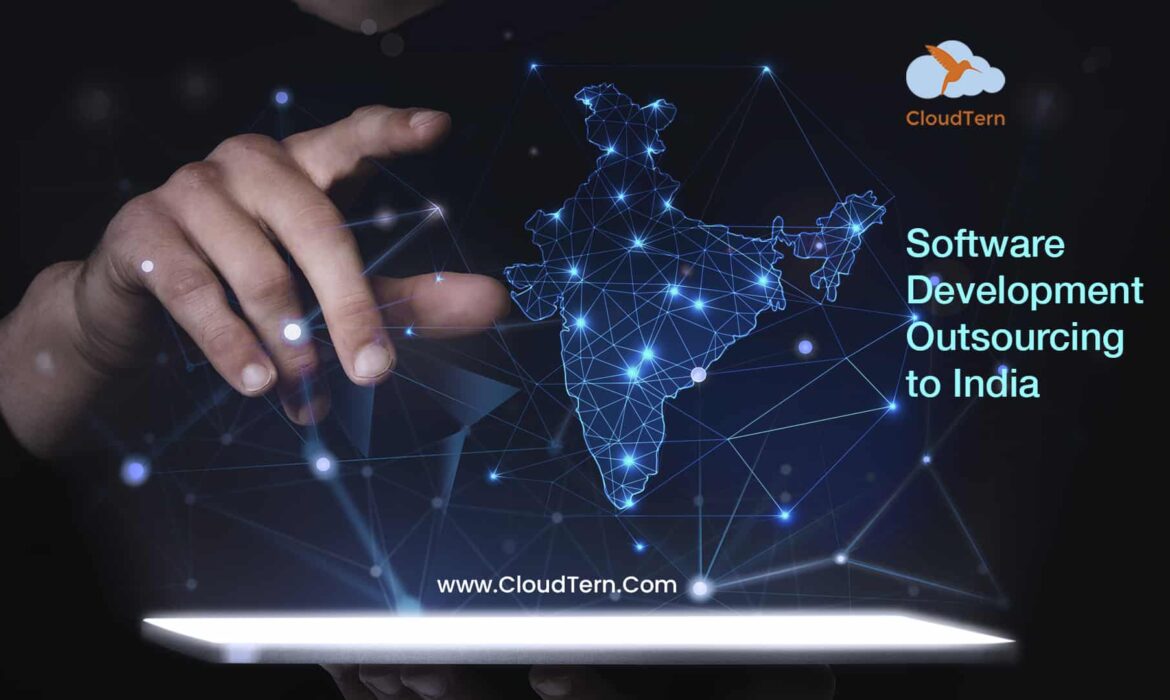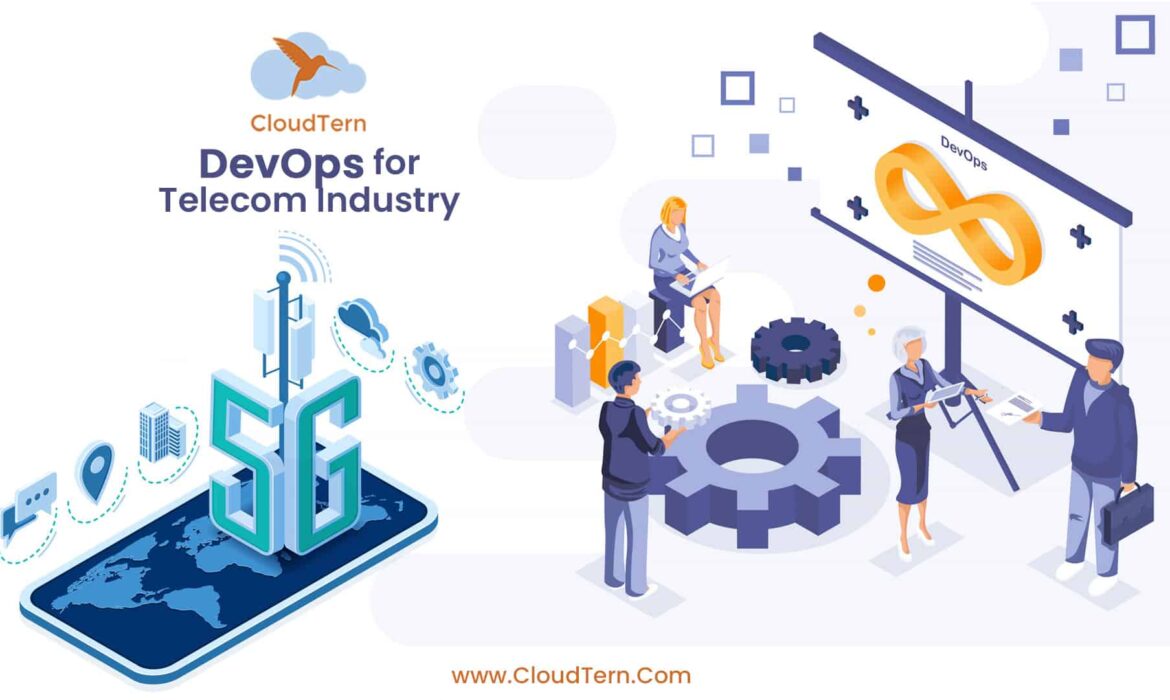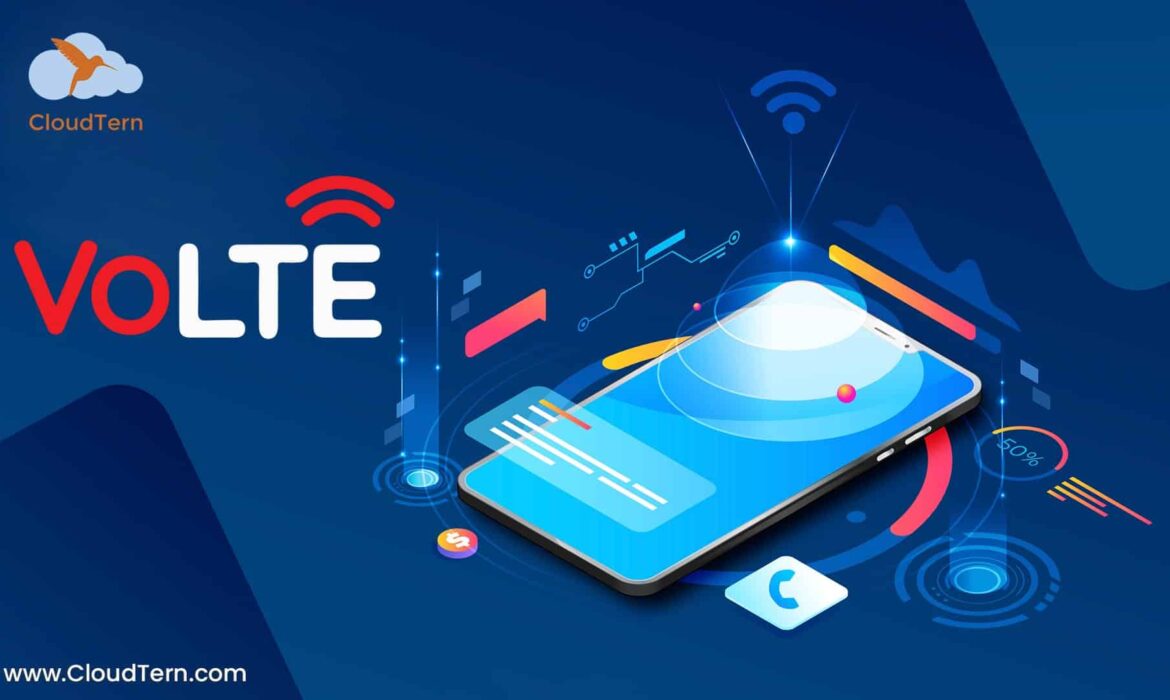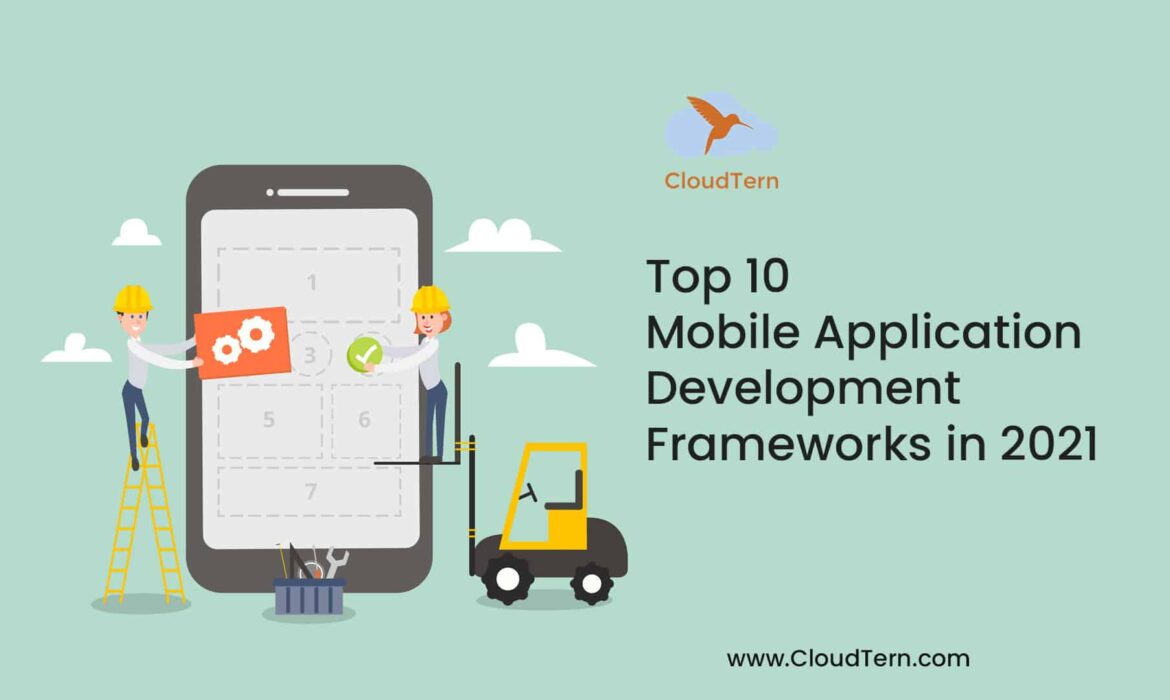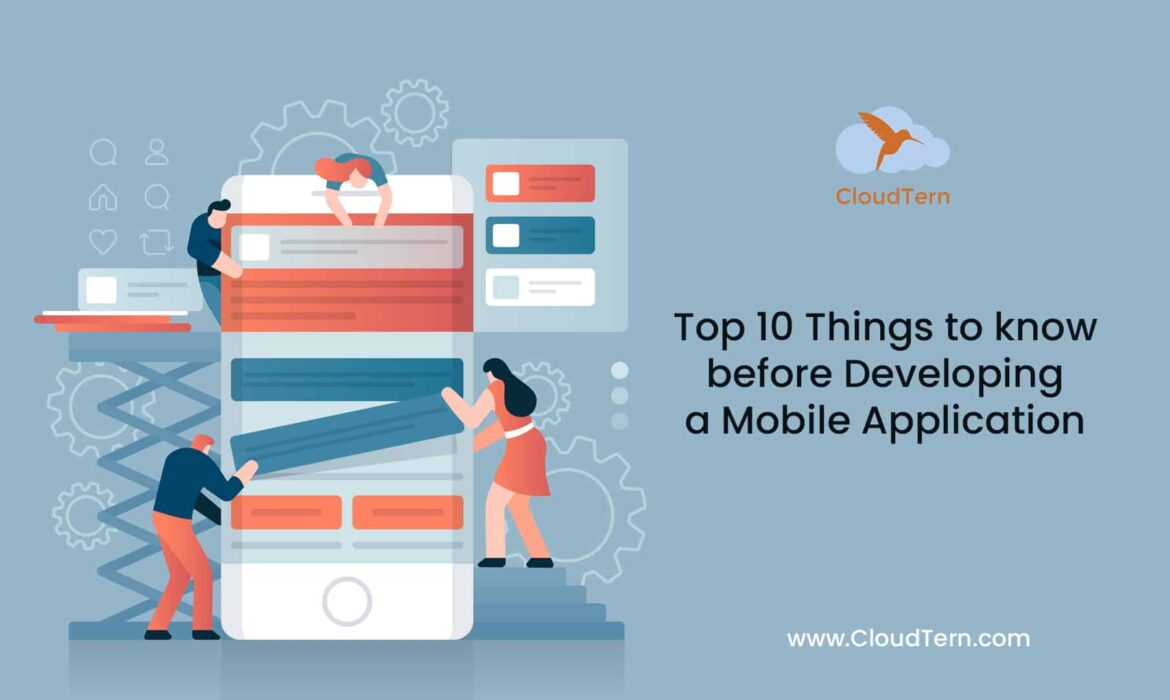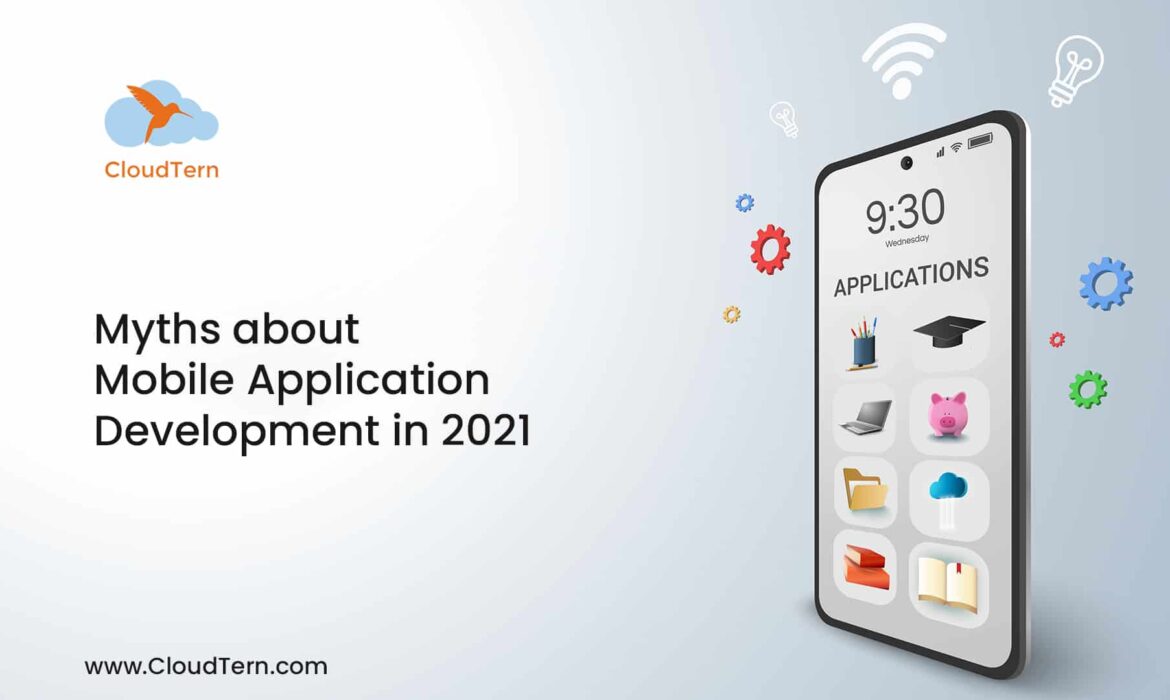Top 3 DevOps Categories Every Organization Should Focus On
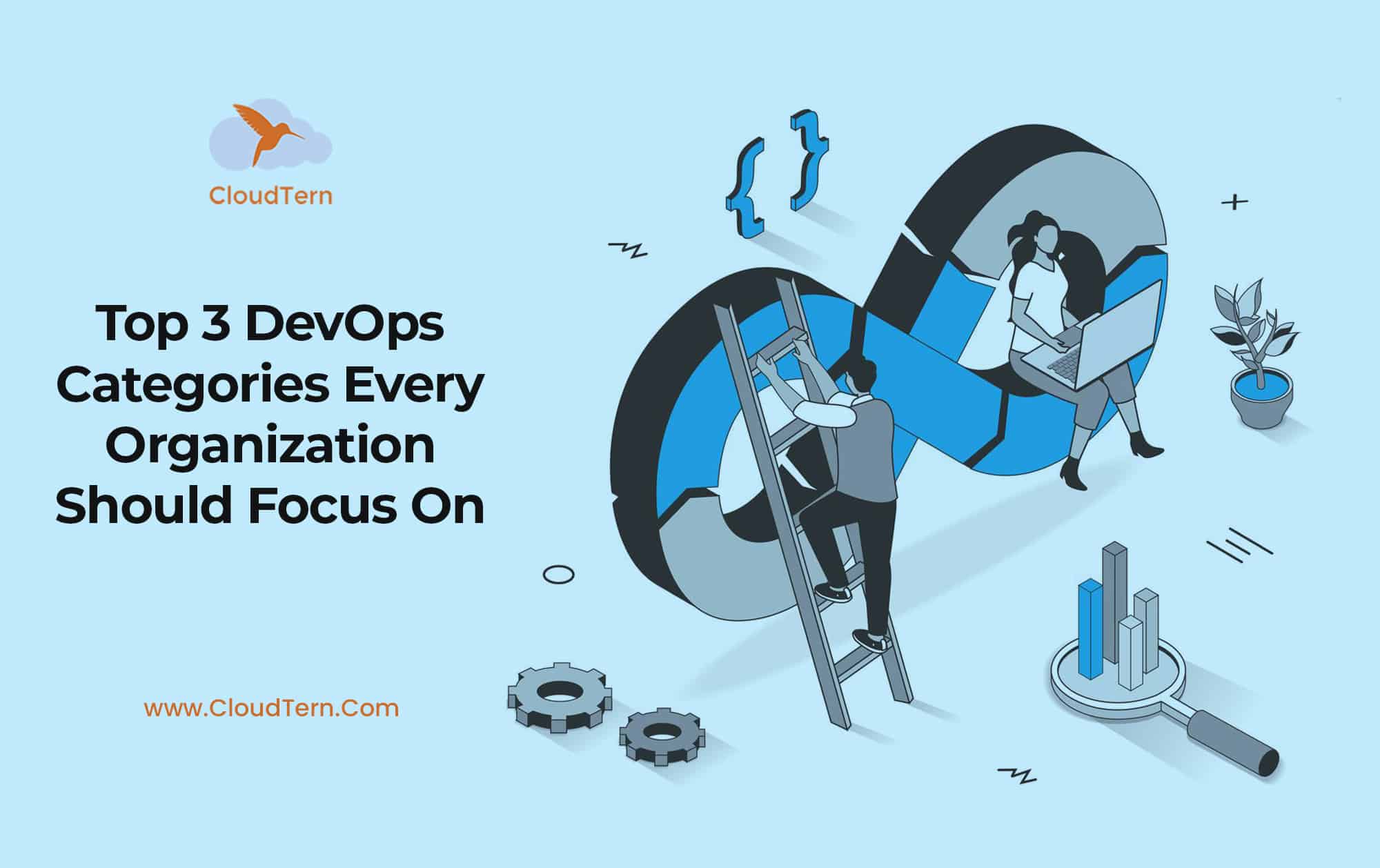
As businesses embrace microservices and cloud-native architectures, DevOps stands at the center, helping businesses efficiently manage IT workloads. DevOps is an innovative methodology that integrates development, operations, security and business teams to seamlessly coordinate and deliver quality products faster and better. From planning and development to delivery and operations, DevOps works right through the entire application lifecycle.
DevOps brings developers and operations together so that the code is automatically build, tested and deployed in a continuous model. It uses a Continuous Integration / Continuous Deployment (CI/CD) pipeline with automation incorporated across the product lifecycle to accelerate the development process and improve efficiencies while reducing costs.
A CI/CD pipeline comprises a series of steps involved in the delivery process of quality software. It includes the following steps:
- Build Phase: The application code is build and compiled here
- Test Phase: The compiled code is tested here
- Release Phase: The code is pushed to the repository
- Deploy Phase: Code is deployed to production
While DevOps offers amazing benefits to IT teams, many organizations fail to leverage it owing to a lack of understanding of this methodology. Understanding different categories of DevOps and implementing the right tool stack is important. Here are 3 important DevOps categories every organization should focus on.
1) Software DevOps
Software DevOps is where the core software is developed. It involves planning the design, assigning tasks to the team and creating artefacts using tools such as coding software, integrated development environment (IDE), version control system, testing framework and issue management.
Integrated Development Environment (IDE): Developers use a text editor to write, debug and edit code. However, an IDE comes with much more features than a text editor offers. Along with an editor, the IDE offers debugging and compilation enabling you to build, test and deploy code from a single dashboard. Choosing the right IDE improves productivity, reduces errors and eases the development process. While choosing an IDE, ensure that it can be integrated with services across the DevOps lifecycle. Visual Studio, IntelliJ and Eclipse are some of the popular IDEs available in the market.
Version Control System: When multiple developers work on a software project, keeping track of code changes becomes a critical requirement. A version control system helps you to keep track of each code change and revert to a specific version when a release crashes. Git is the most popular VCS system. CVS, Mercurial and SVN are other options available in this segment.
Testing Framework: A testing framework offers a set of guidelines to design and run test cases using the best testing tools and practices.
Issue Management: It is a process of identifying system-level conflicts and defects in the workflow based on events or metrics. It involves detection, response, resolution and analysis.
To achieve continuous delivery, it is important to choose the right CI/CD tools and implement automation wherever possible. Here are a few best tools for software DevOps:
Jenkins:
Jenkins is an open-source CI server tool that comes free of cost. It supports Linux, Windows and macOS platforms as well as major programming languages. The main advantage of Jenkins is its plug-in repository. You can find a plugin for most of the development tasks. Moreover, it can be easily integrated with other CI/CD platforms. Debugging is easy. However, it is important to check if the plug-ins are updated. Another downside is the lack of a user-friendly UI. It has a learning curve concerning the installation and configuration of the tool.
Github Actions
Github Actions is a CI/CD platform that enables developers to directly manage workflows in their Github repository. As such, you can perform repository-related tasks in a single place. It offers multiple CI templates. Github Actions comes with 2000 build minutes free per month.
GitLab
GitLab is a CI software developed by GitLab Inc. for managing DevOps environments. It is a web-based repository that enables administrators to perform DevOps tasks such as planning, source code management, operations, monitoring and security while facilitating seamless coordination between various teams through the product lifecycle. This platform was written in Ruby and launched in 2014 as a source code management tool. Within a quick time, it evolved as a platform that covers the entire DevOps product lifecycle. It comes with an open-core license which means the core functionality is open-source and free but additional functionalities come with a proprietary license.
AWS Code Pipeline
AWS CodePipeline is a powerful DevOps product from AWS that enables developers to automate and manage the entire product lifecycle. The tool automatically creates a build, runs the required tests to launch an app whenever a code change is detected. It offers an intuitive GUI dashboard to efficiently monitor and manage workflow configurations within the pipeline. As AWS CodePipeline is tightly integrated with other AWS services such as S3, Lambda or 3rd party services such as Jenkins, it becomes easy to create quality software faster and better. You can simply pull code from S3 and deploy it to Elastic Beanstalk or Codedeploy.
2) Infrastructure DevOps
Infrastructure management is another crucial component of a DevOps environment. With the advent of Infrastructure as Code (IaC), managing the infrastructure became simple, cost-effective and risk-free. Infrastructure as Code is an IT method of provisioning and managing infrastructure resources via config files, treating infrastructure as software. IaC enables administrators and developers to automate resource provisioning instead of manually configuring hardware. Once the hardware is transformed into software, it can be versioned, rollback and reused.
The advent of Ruby on Rails and AWS Elastic Compute Cloud in 2006 enabled businesses to scale cloud resources on-demand. However, the massive growth in web components and frameworks posed severe scalability challenges as administrators struggled to version and manage dynamically changing infrastructure configurations. By treating infrastructure as code, organizations were able to create, deploy and manage infrastructure using the same software tools and best practices. It allowed rapid deployment of applications.
IaC can be implemented using two models namely Declarative Configuration and Imperative configuration. In a declarative approach, the configuration is defined in a declarative model that shows how the infrastructure should be while the Imperative model defines steps to reach the desired state. Terraform and AWS CloudFormation are the two most popular IaC tools that enable organizations to automatically provision infrastructure using code.
Infrastructure as Code took infrastructure management to the next level. Firstly, it rightly fits into the DevOps CI/CD pipeline. The ability to use the same version control system, testing frameworks and other services of the CI/CD pipeline facilitates seamless coordination between various teams and faster time to market while significantly reducing costs. It also helps organizations leverage the containerization technology wherein the underlying infrastructure is abstracted at the OS level, and the hardware and OS are automatically provisioned. As such, containers running on top of it can be seamlessly deployed and moved across a wide variety of environments.
Secondly, IaC offers speed and efficiency with infrastructure automation. It is not confined to compute resources but extends to network, storage, databases and IAM policies as well. The best thing about IaC is that you can automatically terminate resources when they are not in use. Thirdly, IaC reduces operational costs as the number of network and hardware engineers required at every step of operations is reduced. Fourthly, it brings consistency across all deployments as config files use a VCS as a single source of truth. Scalability and availability are improved. Monitoring the performance and identifying issues at a granular level helps reduce downtimes while increasing operational efficiencies. Overall, it improves the efficiency of the entire software development lifecycle.
Terraform
Terraform is an open-source IaC tool developed by Hashicorp in 2014. Written in Go language, Terraform uses Hashicorp Configuration Language (HCL) to define the desired state of the target infrastructure on a variety of platforms including Windows, Solaris, Linux, FreeBSD, macOS and OpenBSD. Terraform is a declarative-based tool that stores the state of the infrastructure using a custom JSON format along with details of which resources should be configured and how. The tool uses ‘Modules’ to abstract infrastructure into sharable and reusable code. HCL is human-readable and helps you quickly build infrastructure code. Terraform is cloud-agnostic and integrates well with AWS. So, it can be used to manage a variety of cloud environments.
AWS CloudFormation
AWS CloudFormation is a managed IaC service from AWS that helps you to create and manage AWS resources using simple text files. Along with JSON template format, YAML is supported. AWS constantly updates the tool to always keep it current while adding several new features regulalry. Nested stacks is a useful feature that encapsulates logical functional areas which makes it easy to manage complex stacks. Similarly, changesets is another useful feature that allows you to inspect changes before applying them. However, CloudFormation is native to AWS. If your infrastructure is AWS-heavy, CloudFormation will serve a great purpose.
3) Database DevOps
DevOps is not just confined to development and operations. Database DevOps extends DevOps capabilities to databases as well, integrating development teams with database administrators (DBAs) such that database code is also included with the software code. As such, database changes can be efficiently monitored and added to the DevOps workflows.
In a traditional development environment, changes made to an application often require changes to be made to the corresponding database. Developers wait for DBAs to make changes to databases that are stored in SQL scripts. These changes have to be reviewed before deploying data to production. As the review is done at the later phase of the workflow, the delay impacts the overall agility and productivity of the project. Errors identified just before a release can be risky and costly as well.
Database DevOps introduces a version control system for database changes. The source control allows you to run builds anytime and roll back if needed at your pace. It also offers an audit trail.
In database DevOps, database workflows are also integrated into the CI/CD pipeline with automation incorporated wherever possible. When a database code change is detected, the system automatically triggers a build. As such, database teams can closely work with other teams on code changes using a well-defined process to improve productivity while reducing task switching.
However, continuous deployment is not easy with regard to databases. When a code change triggers a change to the database schema, it should be migrated to a new structure. You need the right tools to do so. Snowchange is a powerful DevOps database tool that helps you in this regard.
SnowChange
SnowChange is a powerful DevOps database tool developed by James Weakly in 2018 to manage Snowflake objects such as tables, stored procedures and views. Written in Python, Snowchange fits easily into the DevOps CI/CD pipeline as all popular CI/CD tools offer a hosted agent for Python. It is a lightweight tool that follows an imperative approach to DCM (Database migration, schema change and schema migration). It uses a snowchange change script that contains SQL statements defining the state of the database. By looping target databases, the tool applies new changes to the required databases.
Sqitch, Flyway and Liquibase are a few other options in the DevOps database stack.
DevOps is a blanket term that deals with managing an entire product lifecycle. However, it is important to optimize every phase of the DevOps workflow. Choosing the right tool stack for the right process is the key to fully leveraging DevOps.
Confused about various tools, processes and configurations. Not to worry anymore. CloudTern is here to help. As an experienced DevOps company, CloudTern helps you in designing and implementing the right tool stack for your DevOps projects.
Call us right now to master DevOps!
How DevOps Can Help in 5G Transformation?
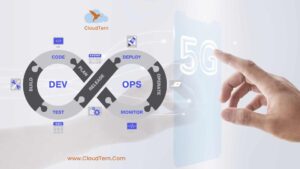
The wait for 5G has finally ended as the new technology is already making waves in the communication segment in recent times. Three important advantages of 5G networks are high-speed internet connections, lower latencies and accommodation of a wide variety of devices in the form of IoT, sensors, smart devices into the network. Though it was launched in 2019 in a few states in the US, it took a while to spread out to other regions. While the Covid-19 virus delayed 5G adoption to some extent, the complexity in migrating workloads to the new network is another reason for this slow start. Right from autonomous vehicles and cloud gaming to smart cities and AR/VR apps, the year 2022 is going to see 5G networks transforming the technology landscape across all industries.
DevOps and 5G Networks
5G technology is powered by software-defined networks running on standard commodity hardware that is inexpensive, disposable and widely available. As such, it can be virtualized and deployed from a central location. Using Network Functions Virtualization (NFV) technology, you can virtualize network functions and package them in containers, eliminating the need for special hardware. As such, you can easily build and deploy Virtual Network Functions (VNFs) using cost-effective commodity hardware. Each function can be developed as a service using the microservices architecture. As such, these services can be deployed using containers and managed with container orchestration tools.
With SDNs, NVFs and VNFs, you don’t have to worry about traditional CapEx costs for the expensive hardware. Instead, you can subscribe to a cloud service and host central servers in the cloud. You can install edge computing at the work location and connect the local systems with the cloud servers. With a high-speed network and low latency, 5G technology allows you to deliver an on-premise experience to users. To further optimize costs, you can implement serverless computing wherein the infrastructure is automatically provisioned when a function is in operation. Once the function is executed, the cloud resources are terminated. That way, you only pay when your application is running. AWS Lambda is a popular serverless computing solution offered by AWS.
DevOps enables you to build, deploy and manage code and configurations with increasing efficiency. Using DevOps CI/CD pipelines, developers can build and deploy code in small batches with automation incorporated across the pipeline. The code is automatically tested, secured and deployed with continuous feedback loops. The same principle can be applied to infrastructure management. By implementing the Infrastructure as Code (IaC) method, you can deploy and manage infrastructure provisioning using config files. With configuration code going through the CI/CD pipeline, it will be versioned and deployed with ease. It means you can revert to an earlier working version in case of a crash. Terraform and AWS CloudFormation are two popular IaC tools that help you efficiently manage infrastructure automation.
The communication segment involves strict SLAs. Moreover, the presence of heterogeneous networks often poses a challenge to move network components between different CSP environments. With DevOps automation and continuous delivery, CSPs can efficiently manage SLAs. With Docker containers, network components can be easily deployed and moved across a wide variety of environments. It also brings seamless coordination and communication between vendors and the operators. With 5G networks accommodating more than a million devices per square kilometre that can seamlessly communicate with each other, businesses have endless options to innovate operations and stay ahead of the competition. Combined with DevOps, 5G is poised to disrupt the business network landscape.
Top 5 Benefits of Software Development Outsourcing to India
 As the entire business world is moving towards digital transformation, every company, regardless of the nature of business, has to manage an IT department. While IT-related firms have the expert staff and resources to build and manage business operations, non-IT companies struggle to be on par with dynamically changing technologies. Procurement, maintenance and upgrading of hardware infrastructure is a challenge. Hiring the right talent and training them adds up to this challenge. When the IT teams are overburdened, it reflects in the quality of the software. The best way to get quality software is to outsource the job to an expert software company. Outsourcing software development helps companies to cut costs, get talented professionals onboard, leverage the latest technological innovations while being able to focus on their core operations.
As the entire business world is moving towards digital transformation, every company, regardless of the nature of business, has to manage an IT department. While IT-related firms have the expert staff and resources to build and manage business operations, non-IT companies struggle to be on par with dynamically changing technologies. Procurement, maintenance and upgrading of hardware infrastructure is a challenge. Hiring the right talent and training them adds up to this challenge. When the IT teams are overburdened, it reflects in the quality of the software. The best way to get quality software is to outsource the job to an expert software company. Outsourcing software development helps companies to cut costs, get talented professionals onboard, leverage the latest technological innovations while being able to focus on their core operations.
Software development can be outsourced to three types of companies:
Onshore Companies: Companies that are located in the same country as the outsourcing company.
Nearshore Companies: Companies that are not located in the same country but are within the geographical location of the outsourcing company.
Offshore Companies: Companies that are located outside the geographical location of the outsourcing company.
When it comes to outsourcing software, India is the best choice. Here are the top 5 benefits of software development outsourcing to India.
1) A Highly Talented Pool of Professionals
While there are millions of offshore companies across the globe, India ranks at the top for a big reason. The country possesses a vast pool of highly talented IT professionals. The software infrastructure landscape is well developed. In addition, high-speed internet connections are available across the country. Indian IT professionals have expertise in all types of programming languages including but not limited to Python, Java, PHP, JavaScript, Kotlin, C#, .NET and Swift Be it cloud computing, DevOps, Artificial Intelligence, Infrastructure as Code or AR/VR, every technological innovation is quickly adapted here. It is not a surprise to note that CEOs of several IT giants such as Google, Microsoft and IBM hail from India.
2) Flexible Time Zone
Another advantage for India is the time zone. India is 9-12 hours ahead of US time zones, 5-6 hours ahead of UK time zones, 5-6 hours behind Australian time zones etc. This difference in the time zone enables companies in the USA to run their operations 24/7. While the company runs in the daytime, the outsourced company works at night. On a quick deadline, you can prepare the guidelines in the daytime and get it ready by the time you come to the office the next morning. If you implement a hybrid approach wherein the local IT staff works in the day and the outsourced team works in the night, your business is always in operation, 24/7. This advantage translates into faster time to market and reduced development costs.
3) Reduced Costs
The average salary of a software engineer in the US is $119,130 per year as per Indeed. Additionally, you have to provide cash bonuses, healthcare and insurance benefits and other perks every year. Infrastructure costs, hardware and software installation, maintenance, software license etc. add up to the burden. In addition, you need to train and manage employees while complying with labour regulations
On the other hand, the average salary of a software engineer in India is $10,810, as reported by Glassdoor. When you outsource software projects to India, you don’t have to go through the cumbersome process of recruitment that involves huge salaries, healthcare and insurance benefits, paid and sick leaves etc. You just pay the agreed amount. While you get your work done at reduced costs, you don’t have to compromise on the quality.
4) Communication Matters
One of the biggest challenges for businesses while outsourcing projects is the language. For seamless coordination and communication across the teams, a common language is a crucial requirement. When it comes to India, most software developers are well versed in the English language and regularly use a variety of communication tools for interacting with internal staff and geographically distributed teams.
5) Supportive Government Policies
The Indian government recognizes the software industry as one of the most important verticals. The government passed the IT Acts 2000 bill that enabled several startups to launch their projects and successfully move ahead. The government is constantly improving IT policies and coming up with strategies to strengthen the IT sector in the country. ‘Digital India’ and ‘Make in India’ are a couple of initiatives that boost the IT infrastructure in India. With tax-related benefits, encouraging incentives, e-filing of docs and other supportive measures, the government supported the industry greatly. As such, the software market earned a revenue of $4 billion within the first half of 2020. Gartner reports that the Indian IT market is expected to touch $16.9 billion by 2025. It means your software projects are being built in the best environment.
Software technology is rapidly innovating. As such, it is not feasible for businesses to learn and adapt to quickly changing trends. The best way is to outsource your software projects to India. Not only do you receive quality apps on time but you also save huge money. Most importantly, you can sit back and relax with peace of mind that helps you to focus on incorporating quality into your core operations.
DevOps for Telecom Industry
While DevOps started off slowly, it has changed gears now, rapidly transforming the business operations of every industry. When it comes to the Telecom industry, IT experts opined that DevOps adoption will be low compared to other verticals as telcos deal with physical servers, routers, load balancers, cables, switches and other network components. However, DevOps was able to make inroads into the Telecom industry as well.
VoIP, Cloud and 5G
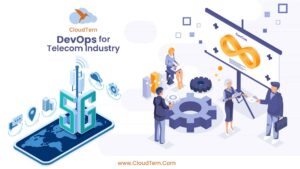 VoIP and cloud computing solutions have taken the telecom industry to the next level. However, cloud computing also brought huge competition into the industry wherein mobile operators and Internet Service Providers (ISPs) had to look for value-added services implementing web services, HTTP/REST and webRTC protocols to sustain this competition. All these changes transformed the hardware-heavy infrastructure turns into a software-enabled environment, allowing administrators to manage it from a centralized location.
VoIP and cloud computing solutions have taken the telecom industry to the next level. However, cloud computing also brought huge competition into the industry wherein mobile operators and Internet Service Providers (ISPs) had to look for value-added services implementing web services, HTTP/REST and webRTC protocols to sustain this competition. All these changes transformed the hardware-heavy infrastructure turns into a software-enabled environment, allowing administrators to manage it from a centralized location.
The arrival of the 5G technology has made a big difference too. While the earlier connectivity networks relied heavily on physical infrastructure, the new 5G technology is a predominantly software-defined network wherein configurations are delivered as software. The Network Functions Virtualization (VNF) technology virtualizes network hardware that can be deployed in containers using Virtual Network Functions (VNF) technology. Combining 5G and edge computing, telecom operators are now able to compete with web-scale companies such as Skype and WhatsApp.
Telecom Workloads Challenges
However, the IT workloads of the telecom vertical are unique and come with specific challenges. The Telecom industry involves complex workloads that require extensive infrastructure customization. For instance, the Network Functions Virtualization (NFV) technology converts various switches, routers, servers, load balancers, firewalls etc. into virtual network services, facilitating communication across the infrastructure. It brings several cloud servers as well as multiple app versions into the picture. Unlike regular IT workloads that comparatively operate on a fixed infrastructure environment, telecom IT network environments are dynamic and rapidly evolving. A notable challenge is performing functional testing on VNF network models wherein all 3GPP elements are required. Performing regression testing for every RF software update adds up to this challenge.
When it comes to deployments, companies are required to frequently release new versions or fix patches on live networks. You don’t have the luxury of performing planned maintenance anymore. With the lifecycle of software abstracted away from the workloads, gaining a comprehensive overview of the entire operations is a challenge.
DevOps for Telecom Industry
DevOps helps telecom companies solve most of these challenges. Firstly, businesses can separate each network function into a microservice and easily package it into containers using a containerization tool such as Docker. These containers can be automatically deployed and easily moved across different environments. Clusters of containers can be efficiently managed by container orchestration tools such as Kubernetes. The modular architecture allows you to move elements between various NFV environments. Using Infrastructure as Code (IaC), businesses can deploy and manage the infrastructure using config files.
In addition to infrastructure deployment and management, DevOps helps telcos easily manage application delivery CI/CD pipelines. It helps developers to develop cleaner and bug-free code in smaller units and frequently update the VNF environments using automation tools. The continuous feedback loops monitor the code performance and deliver feedback regularly. As such, businesses can automate operations, reduce CapEx and gain faster time to market while delivering highly available, scalable and resilient network services. It enables seamless coordination between various Communication Service Providers (CSPs) as well.
The telecom infrastructure is a tough nut to crack for DevOps. However, taking advantage of its robust ecosystem comprising Microservices, Edge Computing, Disaggregated Networks, Infrastructure as Code (IaC), Continuous Delivery, Containerization, Monitoring, Automation etc., DevOps helps telecom companies successfully undergo deep digital transformation while keeping their operations future-proof.
DevOps Predictions for 2022
 DevOps had a dream run in the year 2021 and is sure to continue it into 2022. According to ResearchandMarkets, the global DevOps market was estimated at $4.31 billion in 2020 and $5.11 billion in 2021. This value is expected to touch $12.21 billion in 2026, growing at a CAGR of 18.95% between 2021 and 2026.
DevOps had a dream run in the year 2021 and is sure to continue it into 2022. According to ResearchandMarkets, the global DevOps market was estimated at $4.31 billion in 2020 and $5.11 billion in 2021. This value is expected to touch $12.21 billion in 2026, growing at a CAGR of 18.95% between 2021 and 2026.
DevOps is innovating at a rapid pace. As such, organizations should proactively monitor technology changes and reinvent IT strategies accordingly. Here are the top DevOps predictions for 2022.
1) Distributed Cloud Environments
After hybrid and multi-cloud environments, distributed cloud networks are rapidly gaining popularity in recent times. A distributed cloud environment hosts backend services on different cloud networks in different geolocations while offering a single pane to monitor and manage the entire infrastructure as single cloud deployment. It allows you to customize more-performing and responsive service delivery for specific apps while following regulations of local governments. Distributed clouds bring high resilience, prevent data losses and service disruptions as your apps keep running even when servers in one region crash. It means you gain 99.99% uptime. Edge computing can be considered as an extension to distributed cloud networks.
Distributed clouds offer amazing benefits to all industries. For instance, autonomous vehicles can monitor and process sensor data on-board while sending engine and traffic data to the central cloud. Similarly, OTT platforms can leverage ‘Intelligent Caching’ wherein content in multiple formats is cached at different CDNs while transcoding tasks are done at the central cloud. That way, a newly released popular series can be seamlessly streamed to multiple mobile devices in the same region in real-time.
2) Serverless Architecture
Serverless architecture is a cloud-native architectural pattern that enables organizations to build and run applications without worrying about the provisioning and management of server resources in the infrastructure. The cloud provider takes care of the allocation and management of server and machine resources on-demand. The serverless architecture delivers accelerated innovation as apps can be deployed faster and better. Apps can be decomposed with clear observability as independent services that are event-based. As such, organizations can reduce costs and focus more on delivering better UX.
Serverless computing is rapidly innovating. Function as a Service (FaaS) is a new trend based on the serverless architecture that eliminates the need for complex infrastructure to deploy and execute micro-services apps. Another growing trend is hybrid and multi-cloud deployments that deliver enhanced productivity and are cost-effective. Serverless on Kubernetes is another trend that helps organizations run apps everywhere where Kubernetes runs. Kubernetes simplifies the job of developers and operations teams by delivering matured solutions powered by the serverless model. Serverless IoT is another model that brings high scalability, faster time to market while reducing overhead and operational costs in data-driven environments. It is also changing the way how data is secured in serverless environments.
3) DevSecOps
DevSecOps is a DevOps pattern that converts security into a shared responsibility across the application product lifecycle. Earlier, security was handled by an isolated team at the final stage of product development. However, in today’s DevOps era wherein apps are deployed in smaller cycles, security cannot wait for the end any longer. As such, DevSecOps integrates security and compliance into the CI/CD pipeline, making it everyone’s responsibility. The year 2022 is going to see more focus on shifting security towards the left of the CI/CD pipeline.
DevSecOps increases automation and policy-driven security protocols as QA teams perform automated testing to ensure that non-compliance and security vulnerabilities are efficiently combated across the product lifecycle. The design for failure philosophy is going to be reinvented as well.
4) AIOps and MLOps
Today, regardless of the size and nature, every organization is generating huge volumes of data every day. As such, traditional analytics solutions are inefficient in processing this data in real-time. For this reason, artificial intelligence and machine learning algorithms have become mainstream in recent times.
AI and ML data scientists normally work outside version control systems. Now, CI/CD and automatic infrastructure provisioning are applied to AIOps and MLOps as well. It means you can version your algorithms and identify how changes evolve and affect the environment. In case of an error, you can simply revert to an earlier version.
5) Infrastructure as Code (IaC)
Infrastructure as Code is another growing trend that will become mainstream in 2022. Infrastructure as Code (IaC) is a method of managing the complete IT infrastructure via configuration files. Since cloud-native architecture is becoming increasingly popular in recent times, IaC enables organizations to easily automate provisioning and management of IT resources on a cloud-native architecture by defining the runtime infrastructure in machine-readable files. IaC brings consistency in setup and configuration, enhances productivity, minimizes human errors, and increases operational efficiencies while optimizing costs.
GitOps is the new entrant in this space. Leveraging the IaC pattern and Git version control system, GitOps enables you to easily manage the underlying infrastructure as well as Kubernetes instances. When combined, organizations can build self-service and developer-centric infrastructure that offers speed, consistency and traceability.
How IoB-based IoT Networks will Transform your Business in 2022?
The advent of the Internet of Things (IoT) has disrupted the computer networking landscape. IoT provided a diverse network landscape that accommodated a wide range of devices such as wearables, sensors, computing devices, mechanical devices, objects, sensors etc. IoT enables organisations to monitor data, better use resources, efficiently manage operations, leverage automation, improve productivity and work safety while optimizing operational costs.
The State of the IoT Market
The IoT market is rapidly evolving. According to Fortune Business Insights, the global IoT market is valued at $308.97 billion in 2020. This value is expected to touch $1854.76 billion in 2028, growing at a CAGR of 25.4% between 2021 and 2028. Similarly, Mordor Intelligence reports that the global IoT market revenues will increase from $761.4 billion in 2020 to $1386.06 billion in 2026 at a CAGR of 10.53% during 2021-2026. All these numbers speak volumes of the massive innovation IoT brings to the business network ecosystem. The Internet of Behaviour (IoB) is the new buzz in the IoT landscape.
What is Internet of Behaviour (IoB)?
The Internet of Behaviour (IoB) is a new technology that enables organisations to deliver services to users based on their preferences, interests and choices. The IoB technology leverages the IoT user data and runs advanced analytics on it to derive behavioural trends and offers recommendations based on user choices. It captures all types of human behaviours, analyses the data using advanced machine learning algorithms and other technological innovations. By combining IoT, analytics and behavioural science, IoB enables organisations to deliver better user experience (UX) and search experience optimization (SXO) to customers.
The good thing about IoB technology is that it is not just descriptive but also proactive and prescriptive which means it provides insights into how businesses can derive an expected response from users by influencing certain psychological variables. Applying the IoB technology, organisations can proactively deliver customized offers to the user at the right time using the right channel. While it increases conversion rates, it also improves customer experience and reduces churn.
How does IoB-based IoT Networks transform your Business in 2022?
 The benefits of IoB are not just limited to marketing and sales but extend to every vertical. For instance, doctors can prescribe better healthcare solutions to patients based on the data generated from healthcare apps or wearables. It is especially beneficial for patients suffering from critical illnesses as IoB can monitor and identify anomalies to alert the concerned people in real-time.
The benefits of IoB are not just limited to marketing and sales but extend to every vertical. For instance, doctors can prescribe better healthcare solutions to patients based on the data generated from healthcare apps or wearables. It is especially beneficial for patients suffering from critical illnesses as IoB can monitor and identify anomalies to alert the concerned people in real-time.
Ecommerce companies can easily identify key influential factors of customer purchase and offer customized recommendations accordingly. IoB helps autonomous vehicles to reinvent their operations based on the passenger location, bicycle and scooter traffic, city regulations etc. Similarly, transport companies can deliver a better customer experience based on the IoT data of cab drivers, users and locations. OTT platforms don’t have to rely on past data but use your behavioural data to forecast your likes and dislikes.
Coffee chain Barista has been successful in leveraging this technology. Barista uses facial recognition technology to identify the age, gender and mood of the customer and offer customized and appropriate drinks to the customer, thereby delivering a personalized customer experience. Similarly, Booking.com offers personalized suggestions for travel and stay based on customers’ demographics and past interactions. Insurance company Aviva has leveraged IoB to analyze the driving behaviour of a customer and decide the premium amount for vehicle insurance. It means responsible citizens will pay low premiums.
IoB is already disrupting the customer experience space. However, data privacy and integrity is a cause of concern as it is a challenge to configure access levels to users across distributed IoT networks. If behaviour data falls into the hands of a hacker, it can expose sensitive data. As such, organizations should consider data integrity and security as their biggest priority while implementing IoB-based solutions.
Leverage the Communication Revolution with VoLTE-enabled PCRF Systems
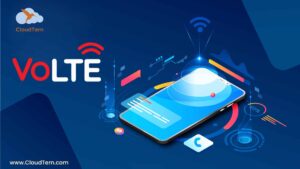 The network evolution is going through two major shifts in recent times. While the voice services are going over IP, networks are moving to the cloud. VoLTE or Voice over LTE has now become mainstream. VoLTE services allow an enterprise to deliver a better customer experience with a modernized voice service. In addition to SMS and voice calls, VoLTE enables you to deliver high-quality video communication while extending calls to multiple devices with seamless collaboration across a wide range of devices such as laptops, tablets, IoT devices, TVs etc. According to Mordor Intelligence, the VoLTE market earned a revenue of $3.7 billion in 2020. This value is expected to touch $133.57 billion growing at a CAGR of 56.57% between 2021 and 2026.
The network evolution is going through two major shifts in recent times. While the voice services are going over IP, networks are moving to the cloud. VoLTE or Voice over LTE has now become mainstream. VoLTE services allow an enterprise to deliver a better customer experience with a modernized voice service. In addition to SMS and voice calls, VoLTE enables you to deliver high-quality video communication while extending calls to multiple devices with seamless collaboration across a wide range of devices such as laptops, tablets, IoT devices, TVs etc. According to Mordor Intelligence, the VoLTE market earned a revenue of $3.7 billion in 2020. This value is expected to touch $133.57 billion growing at a CAGR of 56.57% between 2021 and 2026.
While VoLTE is revolutionizing the communication segment, service providers are not able to fully leverage this technology owing to legacy PCRF systems. Upgrading the PCRF system is the need of the hour.
An Overview of PCRF
Policy Control and Rules Function (PCRF) is a critical component of a Low-Term Evolution (LTE) network that offers a dynamic control policy to charge mobile subscribers on a per-IP flow and per-subscriber flow basis. It brings the capabilities of earlier 3GPP releases while enhancing them to provide QoS authorization for treating different data flows, ensuring that it is in accordance with user subscription profiles.
The need for VoLTE-enabled PCRF
The majority of service providers are battling with legacy PCRFs that struggle to handle the high scalability, performance and reliability requirements of VoLTE services. When organizations see a new business opportunity, they are not able to tap it owing to BSS policy management challenges. They have to either integrate the new policy management with the legacy system or extend the legacy system to support the new policy. Another option is to manage two PCRFs which is more practical and cost-effective. However, separating subscription traffic is the biggest challenge here. This is why many businesses are not able to tap new opportunities but increase customer churn and revenue losses.
Here are some of the reasons why VoLTE-enabled PCRF is the need of the hour.
Differentiated Voice Service and Support
VoLTE services open up new business opportunities for organizations. For instance, service providers can deliver communication services in a tiered model wherein premium services are charged more. At the same time, you can deliver premium calls with higher quality along with dedicated bearer support. Your PCRF should be robust enough to different call sessions and ensure dedicated voice support for premium subscriptions while being able to monitor and manage separate charges.
Alternate Voice Support
When the customer loses LTE coverage, the call should be routed to alternate voice support via a fall-back mechanism using Single Radio Voice Call Continuity (SRVCC) and Circuit Switch Fallback (CSFB) methods. Legacy PCRF systems are not efficient enough to support both these methods.
Regulatory Compliance
Along with quality voice services, the communications service provider should ensure that safety regulatory measures are adhered to and prioritized as well. For instance, when customers make an emergency call, the PCRF should identify the subscriber location and override current subscription plans to offer QoS prioritization. A modern PCRF will help you do so.
Real-time Policy and Charge Management
With a variety of monetization opportunities available for enterprises, policy control along with a real-time subscription monitoring system is the need of the hour. While a VoLTE session is running, businesses can sell another video streaming product or upgrade the subscription for a temporary period. The PCRF should be able to monitor changes in plans in real-time for policy control and charges management.
As the communication segment is going through the VoLTE revolution, it is important for businesses to ensure that the PCRF is VoLTE-enabled. Failing to do so will keep your business out of competition within a quick time.
CloudTern is a leading provider of communications solutions. Contact us right now to transform your legacy PCRF systems into robust VoLTE-enabled PCRF solutions!
Top 10 Mobile Application Development Frameworks in 2021
 Mobile app development is not an option anymore but has become a necessity for businesses of all sizes in recent times. As such, organizations are aggressively building native apps to nurture existing customers while quickly tapping into new markets. However, native app development comes with multiple challenges. Building a native app is expensive and time-consuming and requires expert knowledge of programming languages. Cross-platform development frameworks solve these challenges. A cross-platform framework solution enables you quickly write a single code base and launch an app on multiple platforms with ease. Here are the top 10 mobile application development frameworks in 2021.
Mobile app development is not an option anymore but has become a necessity for businesses of all sizes in recent times. As such, organizations are aggressively building native apps to nurture existing customers while quickly tapping into new markets. However, native app development comes with multiple challenges. Building a native app is expensive and time-consuming and requires expert knowledge of programming languages. Cross-platform development frameworks solve these challenges. A cross-platform framework solution enables you quickly write a single code base and launch an app on multiple platforms with ease. Here are the top 10 mobile application development frameworks in 2021.
1) Flutter
Flutter is one of the most popular mobile app development frameworks available in the market. Coming from the IT giant Google, Flutter quickly acquired the tag of being the best portable UI framework. It enables developers to quickly build beautiful native, web and hybrid apps with ease. Flutter is open-source and free. Flutter allows you to build apps with a native-like performance by focusing on cross-platform issues such as navigation, scrolling, widgets, icons etc. You can customize your application by leveraging the layered architecture offered by Flutter.
Google Ads, Alibaba, Reflectly, JD Finance and Hamilton are a few apps built using Flutter.
2) React Native
React Native is another popular mobile app development framework that helps you quickly build high performing apps for Android and iOS platforms. It is a JavaScript framework developed by Facebook and is now offered as open-source and free. Initially, it was built for the iOS platform and later the functionality was extended to support Android. It uses JavaScript and React to build apps. It allows the reuse of components. Maintenance is easy as you have to maintain a single code.
Facebook, Instagram, Soundcloud are examples of apps built using React Native
3) Xamarin
Xamarin is a popular cross-platform framework that was released in 2011. In 2016, Microsoft acquired Xamarin. It is now available with Visual Studio. Xamarin contains large amounts of C# code which means you don’t need to learn Kotlin, Swift or Objective-C to build apps. With powerful native user controls, Xamarin helps you to build cross-platform apps that are close to native. It gives you access to all native functionalities.
The World Bank, Alaska Airlines, FreshDirect, Storyo and MRW Courier are a few apps powered by Xamarin.
4) Ionic Framework
Ionic framework is popular for building progressive web apps as well as cross-platform apps with ease. It enables developers to build native-like apps by providing UI elements such as navigation, filtration, input sheets, view etc. Ionic leverages Apache Cordova plugins along with Angular framework to facilitate building apps for Android and iOS platforms. It offers a CLI interface that enables developers to quickly perform tasks. Document Object Model (DOM) usage is minimal which means the performance and efficiency of mobile apps get improved.
Market Watch, Honeyfi, ChefSteps, Diesel and Pacifica are powered by Ionic Framework.
5) PhoneGap
PhoneGap is a mobile app development framework developed by Nitobi. It was formerly known as Apache Cordova. When Adobe acquired Nitobi, it renamed Apache Cordova as PhoneGap. This framework allows you to easily build cross-platform apps using JavaScript, CSS and HTML. Once the app is ready, it is wrapped in a WebView browser object to be deployed as a stand-alone native app. While being flexible with web technologies, PhoneGap offers great community support as well.
Wikipedia, Worklight, appMobi, Monaca and Tripcase apps use PhoneGap.
6) Corona / Solar2D
Corona is a cross-platform framework that enables you to build a variety of 2D applications for mobile devices, tablets, desktops and TV apps such as Fire TV, Apple TV, and Android TV etc. It was developed by Corona Labs and written in Lua programming language. In 2017, Corona Labs was acquired by Appodeal and the enterprise version of Corona was released as a free version. In 2020, Corona was renamed Solar2D. The tool is suited for mobile games as you can quickly build games using the lightweight Lua platform. It offers extensive plugin support and strong API support
Zip Zap, PKTBALL, FUN RUN 2, Gunman Taco Truck and Mandora are a few game apps built with Solar2D.
7) Intel XDK
Intel Integrated Development Environment is a popular IDE offered by Intel to easily build apps for iOS and Android mobile platforms, tablets and web technologies. You can write the code and simulate the app in the IDE. Once the cross-platform app is ready, it is exported to PhoneGap for a native wrapper. Building apps using Intel XDK is significantly cost-effective. Code assistance, testing and plugin support are some features that help developers to easily write apps. However, it is not suited for feature-rich and complex apps.
8) Native Script
Native Script is an open-source cross-platform framework developed by Progress in 2014. By the end of 2019, nStudio took over the project. It was later inducted into OpenJS Foundation as an incubating project. Native Script uses JavaScript and also supports, TypeScript, Vue and Angular JS frameworks. Mobile apps built using Native Script deliver a native-like experience as you can directly access iOS and Android APIs. You don’t have to wrap them with a native environment as you can repurpose maven or npm libraries. Robust support is available too.
Map My Photos, Bitpoints Wallet, Regelneef and Daily Nanny are a few apps powered by Native Script.
9) Mobile Angular UI
Mobile Angular UI is a mobile app development framework that uses Twitter Bootstrap and Angular JS framework to deliver high-performance apps that are close to native. It allows you to access UI elements such as switches, sidebars, navbars and overlays to create a native-like environment. There is a minimal learning curve as Angular JS is a popular framework. You can also use Ionic components here. As Mobile Angular UI only uses JavaScript, apps built using this framework might raise security concerns. Debugging is slightly complex too.
Gunks and iKeyBox use Mobile Angular JS.
10) jQuery Mobile
jQuery Mobile is a web and mobile framework that was developed by the jQuery Team in 2010. The framework is written in JavaScript and supports a variety of tablets, smartphones and all major browsers. Developers who are familiar with jQuery syntax can quickly build mobile apps using this framework. It comes with minimal dependencies. Ajax navigation system is used for page transitions. It is also compatible with PhoneGap and Whitelight frameworks. However, CSS themes are limited.
Regardless of the mobile app development framework you choose, CloudTern helps you in building high-performing and highly scalable mobile solutions.
Contact us right now to fully leverage the mobile revolution!
Top 10 Things to know before Developing a Mobile Application
 The mobile market is rapidly evolving. With smartphones becoming increasingly popular, businesses are now forced to create mobile-first applications to tap this huge market. Mobile apps help businesses to maintain seamless communication with customers, quickly tap into new markets and increase revenues. Before developing a mobile app, it is important to consider these top 10 aspects.
The mobile market is rapidly evolving. With smartphones becoming increasingly popular, businesses are now forced to create mobile-first applications to tap this huge market. Mobile apps help businesses to maintain seamless communication with customers, quickly tap into new markets and increase revenues. Before developing a mobile app, it is important to consider these top 10 aspects.
1) Identify your Target Audience
Before jumping onto the development phase, it is important to identify your target audience. Without knowing who will use it, you can’t design the features and functionalities of the mobile application. For instance, if you are creating an app for senior citizens, you should ensure that buttons, fonts and other user interface elements are large enough to be visible to all users. Once you identify your target audience, you can then ask questions about what features and functionalities they require and how the app can add value to their lives as well as to the business.
2) Perform Market Research
Before creating a mobile app, perform market research to identify customer requirements, market trends and popular niches etc. You don’t want to reinvent the wheel when there are multiple options available in the market. Think out of the box and create something unique to stand out from the crowd. In case you want to create a similar app, consider what unique features you can incorporate into the app and how it can be better than the available ones.
3) Choose the Target Platform
Today, Android and iOS are the two most popular mobile platforms available in the market. If you are creating a mobile application, choose between iOS and Android before proceeding with the development. The reason is that iOS uses Swift and Objective – C while Android requires Kotlin or JavaScript. Based on the OS/platform you have to choose the technology stack and coding professionals. Android is more popular and accounts for the majority of mobile users. So, creating a mobile app for Andriod users will be a good idea.
4) Native Vs Hybrid App
Another important aspect to consider is choosing between native and hybrid app development models. A native app is created for a specific platform while a hybrid app works on both platforms. Native apps offer more speed and performance while delivering a great user experience. However, it takes more time to create a native app. The development costs are comparatively more as well. On the other hand, hybrid apps are easy and quick to build but might not offer the same speed, performance and user experience compared to native apps.
5) Prepare your Budgets
Before launching the development cycle, make sure to come up with a budget for the entire product lifecycle. Consider the target audience, the features and functionalities required, platform/OS and the type of app development model to choose, technology stack and professionals etc. Don’t forget to add the maintenance costs as well. Once you have a budget plan, you can optimize the development process to create a cost-effective app.
6) Create an App Development Strategy
Developing a mobile app is not an easy task. Right from product design, architecture and development to testing and launching the app, there are multiple stages of the development lifecycle involved. As such, it is important to understand the entire process before beginning the project. The job doesn’t end with releasing the app. You should also consider maintenances, updates and releases.
7) Build an MVP First
Before releasing your app into the market, it is important to test it on target devices. You can do so by creating a minimum viable product (MVP) that contains important features of the app. By testing the MVP, you can understand whether the app can solve the intended problems, how is the performance of the app, what features can be improved etc.
8) User Experience is Important
In addition to features and performance, user experience is the key to the success of your business. The ease of navigation, color scheme, fonts and the aesthetic display is what captures the interest of your users. It also gives them an impression of your business. When customers encounter a bad experience while using the app, they might look out for other options.
9) App Security is Important
For any software product, security is undoubtedly the most important aspect. When it comes to mobile apps, security becomes even more important. Similarly, data security and integrity has to be taken care of as well. If you are building an app without a data protection plan, you are actually creating a disaster.
10) Choose the right mobile development company
It is important to understand that your mobile app is the gateway for your customers to reach out to you. So, you can’t keep any stone unturned. To develop a high-performing mobile app that delivers value to users, choose an experienced mobile app development company. Before finalizing one, check out the reputation of the company, customer reviews, case studies etc. Similarly, find out the technologies they use and the coding skills they possess. User experience is a key aspect as well.
CloudTern is a leader in the mobile app development segment. Whether you want to build a custom iOS/Android App or a hybrid solution, CloudTern is here to help.
Contact us right now to stay ahead of your competition!
Myths about Mobile App Development in 2021
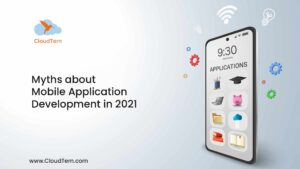 There are 6.37 billion smartphone users across the globe as of 2021 and this number is increasing at a rapid pace, reports Statista. For this reason, organizations are increasing building mobile applications to fully leverage this mobile revolution. Mobile apps allow organizations to proactively send push notifications to customers and keep them always connected with the company. Similarly, customers can access information about products and services in real-time. While businesses are aggressively building mobile apps, there are several misconceptions about developing them. Here are the most common myths about mobile app development in 2021.
There are 6.37 billion smartphone users across the globe as of 2021 and this number is increasing at a rapid pace, reports Statista. For this reason, organizations are increasing building mobile applications to fully leverage this mobile revolution. Mobile apps allow organizations to proactively send push notifications to customers and keep them always connected with the company. Similarly, customers can access information about products and services in real-time. While businesses are aggressively building mobile apps, there are several misconceptions about developing them. Here are the most common myths about mobile app development in 2021.
1) Mobile App Development is Inexpensive
The most common misconception about a mobile app is that it is cheaper when compared with regular software products. The reason for this myth is that mobile apps look smaller in size. However, it is important to understand that a mobile application goes through all the regular processes such as design, development, testing, production and maintenance and involves designers, developers, testers, analysts, network and operations professionals etc.
The cost of the app is based on the platform, supported languages, supported OS, security level, device types, number of screens, custom controls, and special functionalities such as in-app purchases etc. According to BusinessofApps, the cost of a basic app falls between $40,000-60,000 while a complex app costs more than $120,000. Similarly, the maintenance cost of the app would be 15%-20% of the actual development cost.
2) Mobile App Development is Easy
Another myth about mobile app development is that it is simple, easy and quick to build a mobile app considering the size and nature of a smartphone. However, it is not true. Whether you build a desktop application or a mobile app, every software project goes through the regular product development lifecycle comprising design, development, testing, marketing strategy, AppStore optimization, maintenance etc. Normally, it takes 3-6 months to build a minimal app while other apps that involve complex procedures take 1-2 years to be completed.
3) Mobile App development is just about Coding
When you think about a mobile application, the code comes first to mind. While coding is important for any software product, there are many more aspects involved in a mobile app development project. You need to create a mobile app strategy, marketing strategy, and a development plan that involves a number of stakeholders across the organization. Similarly, you can’t rewrite the code of an Android app and launch it iOS. The technology stack is completely different for both platforms which mean you need to begin it from scratch.
4) More Features make it a great App
One of the biggest misconceptions about mobile apps is that the more features you add to them, the better they become. However, the performance of the app doesn’t make it greater but the purpose it solves is what makes sense. Moreover, by stuffing multiple features into the app, you are actually increasing the complexity for users. The speed and performance of the app get affected as well. One of the important aspects to consider is the user interface. A good UI/UX design is sure to attract visitors.
5) A single App created by cross-platform frameworks serves all platforms
Today, there are multiple cross-platform frameworks available in the market that helps you to create cross-platform apps that run on both iOS and Android platforms. As such, there is a common myth that you can easily create an app using these frameworks and release it on both platforms. While it is true to some extent, applications that are built using cross-platform frameworks doesn’t automatically allow you to share code between Android and iOS platforms.
In today’s highly competitive world, businesses should always be in touch with customers, keep them updated with the latest happenings with regard to the company while being quick to tap new opportunities. Mobile apps provide the right platform to do so. However, choosing the right mobile app development strategy is the key here.
Contact CloudTern right now to build high-quality, high-performing Apps!

